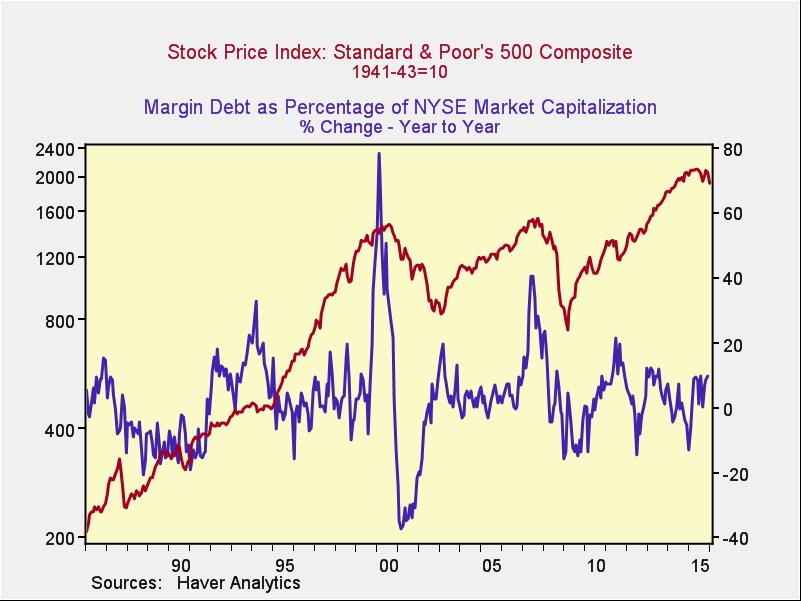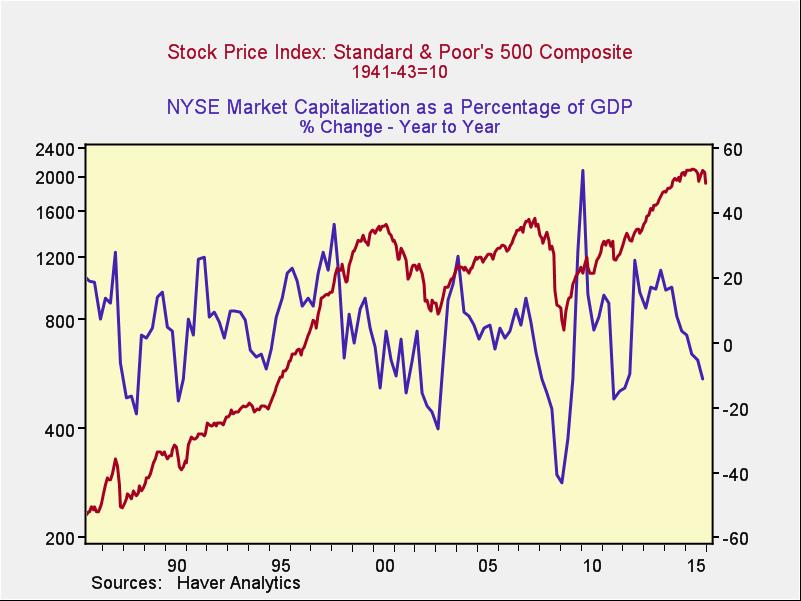This certainly seems to be an indicator of higher risk levels, but again, the risk isn’t necessarily immediate.
Risk factor #4: Changes in margin debt
Looking at the change over time, however, even as the absolute risk level remains high, the immediate risk does not. We do not see the kind of spike in debt that occurred just before previous pullbacks—certainly not at the level of 2000 or 2007, and not even to the level of 2011.

The absolute level, then, is high, and so is the risk level, but the trigger isn’t being pulled just yet.
Risk factor #5: The Buffett indicator
Said to be favored by Warren Buffett, the final indicator is the ratio of the value of all the companies in the market to the national economy as a whole.

On an absolute basis, this indicator is actually somewhat encouraging. Although it remains high, it has pulled back to less extreme levels. On a change-over-time basis, however, downturns in this indicator have typically led market pullbacks—and once again, we see that here.
High risk isn’t immediate risk
Despite a substantial recovery in stock prices, risks are clearly still apparent. Technicals are another worrying factor; although improving, the market remains below its long-term trend lines, which I consider to be the 200- and 400-day averages. Per these indicators, a deeper pullback is very much still in play.
There’s a big difference, however, between high risk and immediate risk—and it is one that is crucial to investing. Not all of the indicators suggest an immediate problem, so we may well have seen the worst of it this time even as the risks remain for the future.
As I said, I will continue to think about which factors to use, with an emphasis on signals that may suggest the risk is more immediate and severe. I’d welcome your suggestions!








